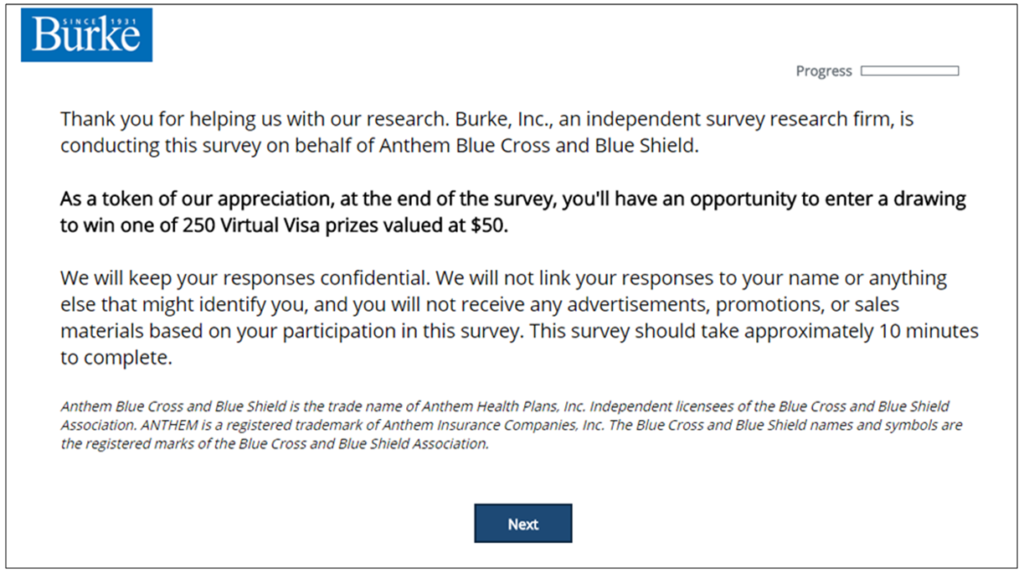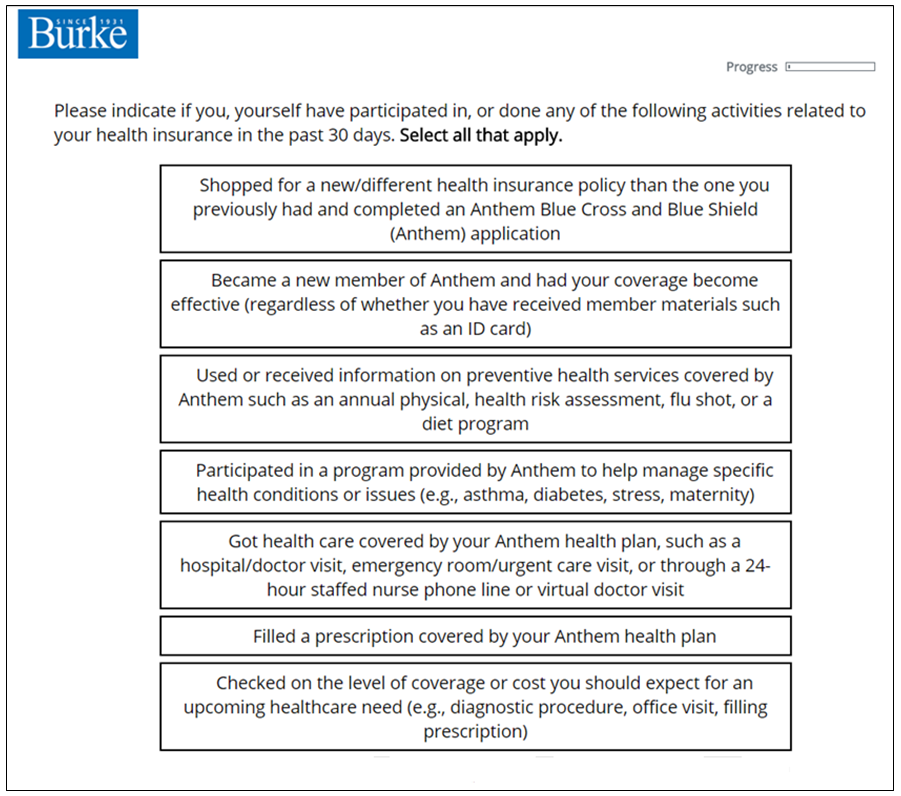
What do you do when a company asks for your opinion… and then refuses to let you voice it?
I’ve written in the past about how companies often inadvertently make it difficult, if not impossible, for customers to provide feedback. Common culprits include things like complicated survey design or malfunctioning survey administration systems.
Recently, however, I came across the most startling example yet of this dynamic – startling because it wasn’t inadvertent, but rather, quite deliberate.
The company behind it all was health insurer Anthem, a firm that finds itself perennially at the bottom of many prominent customer experience rankings (and here’s yet another reason why).
Anthem periodically surveys its health insurance policyholders via e-mail, with the help of its research supplier, Burke. Upon clicking though the survey’s e-mail invite, customers are brought to this landing page:

They’re then asked to indicate the nature of their most recent interaction with Anthem (which, for the record, is bad survey design on its own — the company should know this from the data it collects and survey respondents shouldn’t have to specify it):

Now here’s where it gets interesting. Upon selecting one of the above interaction types, some customers will receive the following message (as I did):

And that’s it. Game over.
How do you think that message feels to customers who were gracious enough to take a few moments of their time to provide Anthem with feedback? Mind you, we’re not talking about unsolicited feedback. This is feedback that Anthem explicitly requested from that customer.
The answer is it’s a horrible feeling. It’s a sign of complete and utter disrespect to the customer.
It’s particularly infuriating for customers who were already sour on Anthem and saw the survey as an opportunity to get a few things off their chest. For them, the aborted survey is a major letdown – and just serves to reinforce and amplify their negative impressions of Anthem.
Why on Earth would Anthem and its survey administrator choose to shut off the feedback spigot so abruptly?
It is, quite simply, a matter of statistics.
For a researcher, surveys are all about sample sizes – collecting enough responses so the information gathered is statistically significant (i.e., it provides an accurate reflection of the views of the overall customer population).
Once enough people respond to the survey, and a statistically significant sample size is achieved, researchers will tell you that there’s no need to collect additional responses.
So, for example, when enough people have completed the Anthem survey about a recent prescription filling experience, that part of the survey “closes” and all subsequent respondents get rebuffed.
From a pure research perspective, shutting the survey down makes sense. Why incur the expense of collecting and analyzing responses that are statistically unnecessary?
But from a customer experience standpoint, shutting down the survey – after invites are sent – is just about the worst thing you can possibly do. That’s because, from the customer’s perspective, the feedback they have to share is significant, no matter what the statisticians say.
Surveys are much more than a research instrument, they are part of a company’s customer experience. In this case, for many of Anthem’s policyholders, a survey that was intended to be a constructive feedback exercise devolved into yet another customer annoyance.
No offense to research specialists (good ones are invaluable), but if you’re embarking on a customer feedback program, don’t hand the keys over to the statisticians or survey wonks. Instead, make sure someone with an eye towards the customer experience is overseeing the effort.
Statistically speaking, that’s your best bet for success.
Jon Picoult is the founder of customer experience advisory firm Watermark Consulting. As a consultant and a speaker, he’s worked with the CEOs and executive teams of some of the world’s leading brands. Learn more about Watermark or follow Jon on Twitter @JonPicoult.